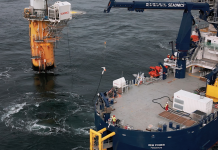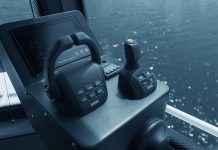Sandia National Laboratories and the National Renewable Energy Laboratory (NREL) have been awarded Department of Energy funding to work with Sentient Science Corporation on the development of a prognostic solution to predict and extend wind-turbine blade life.
Sentient Science, which developed its DigitalClone® Live software using four technical pillars — materials science, data science, tribology, multi-body dynamic system modeling to predict the life and provide life extension actions for rotating mechanical equipment — has been enhancing its DigitalClone technology to include wind-turbine blade early failure predictions.
The collaboration with Sandia and NREL will give Sentient access to intellectual and technical resources at both laboratories to accelerate blade-modeling capabilities within DigitalClone Live.
“A single defective wind-turbine blade could cost wind operators up to $300,000 if it’s not caught early enough for repair,” said Elon Terrell Ph.D., computational tribologist at Sentient Science. “We’re developing a predictive health monitoring solution to detect contact bending fatigue and wear rates of wind-turbine blades. The partnership and access to the lab resources and brilliant minds at Sandia and NREL will help us accelerate this program.”
The U.S. Department of Energy’s program encourages collaboration between national lab researchers and American small businesses. The Small Business Vouchers program facilitates access to DOE national laboratories for competitively selected small businesses, enabling them to tap into the intellectual and technical validation resources needed to validate critical technology enhancements in an effort to advance energy products, lower the cost of energy, and gain a global competitive advantage.
As part of the project, researchers will subject a Sandia-designed DOE National Rotor Testbed 13-meter turbine blade to continual fatigue testing and use optics to identify the wear of the blade over time. The physical test data will be used during the development of the computational model and then validate the accuracy of the digital approach.
“We look forward to the opportunity to partner with Sentient Science in leveraging Sandia’s decades of work in sensors, prognostic structural health monitoring, and damage modeling,” said Jon White Ph.D., principal member of the technical staff at Sandia.
“Partnering with Sentient Science provides a unique opportunity to advance predictive turbine-blade monitoring solutions,” said NREL mechanical engineer Scott Hughes. “NREL’s structural verification research helps validate tools that can extend the life of wind-turbine blades.”
Once the DigitalClone blade model is completed, the software capabilities will be built into Sentient’s DigitalClone Live Software as a Service, which is used by wind-turbine operators to lower their cost of energy through prognostics and life-extension recommendations.
“Our DigitalClone Live prognostic technology is being used by wind operators and OEMs around the world to achieve life extension on their wind turbines,” said Ward Thomas, CEO and president of Sentient Science. “We see what sensors can’t see and predict early failure initiation months and years before a sensor or a CBM (condition-based monitoring) system detects a field failure. Users understand which turbines to climb and which components need attention with enough advanced notice to optimize their supply chain, lower inventory, reduce lead times, and coordinate maintenance plans to reduce cost and downtime. We expect to reduce the user’s cost of energy by an additional $1/MWh with the integration of blade life extension through the software’s watch list and asset action recommendations.”
Source: Sentient Science
For more information, go to www.sentientscience.com



























